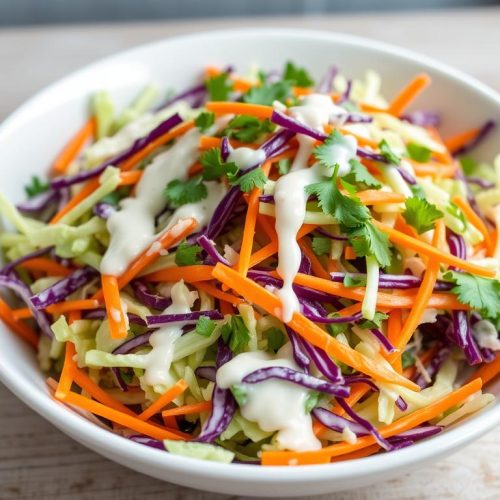Managing POTS (Postural Orthostatic Tachycardia Syndrome) can be challenging, but understanding the right diet can make a big difference. The POTS Disease Diet focuses on what to eat and what to avoid to help manage symptoms and improve overall health. This guide will provide key takeaways that can help you make informed choices about your diet and lifestyle.
Key Takeaways
- Stay hydrated by drinking plenty of fluids throughout the day.
- Include more salt in your meals to help with blood pressure.
- Choose whole grains and complex carbs to keep your energy steady.
- Eat lean proteins like chicken, fish, and beans for better health.
- Avoid caffeine, alcohol, and processed foods that can worsen symptoms.
Understanding POTS and Its Dietary Needs
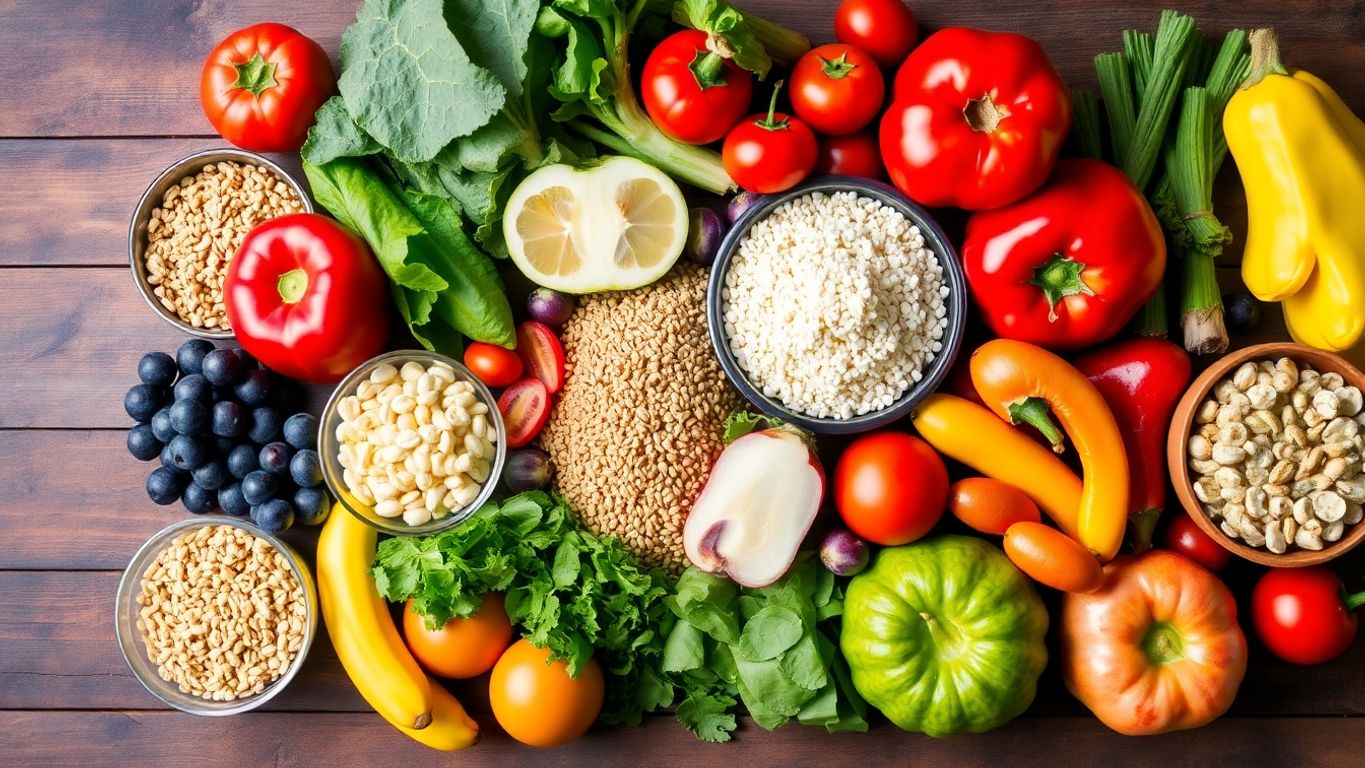
What is POTS?
Postural Orthostatic Tachycardia Syndrome, or POTS, is a condition that affects blood flow. It causes a fast heart rate when a person stands up. This can lead to dizziness, fatigue, and other symptoms. Understanding POTS is key to managing it effectively.
Why Diet Matters in POTS
Diet plays a big role in managing POTS. The right foods can help control symptoms and improve overall health. Here are some important points to consider:
- Staying hydrated is crucial.
- Increasing salt intake can help stabilize blood pressure.
- Eating smaller, more frequent meals can prevent blood sugar spikes.
Common Symptoms and Dietary Triggers
People with POTS often experience symptoms like:
- Dizziness
- Fatigue
- Heart palpitations
Certain foods can trigger these symptoms. For example, skipping meals or eating irregularly can lead to fluctuations in blood sugar levels. It’s best to aim for regular, balanced meals and snacks.
Remember, a well-planned POTS diet can make a significant difference in managing symptoms. Consulting a healthcare professional for personalized advice is always a good idea.
Hydration: The Cornerstone of POTS Management
Importance of Staying Hydrated
Staying hydrated is crucial for managing POTS. When you drink enough fluids, it helps your blood volume, which can reduce symptoms like dizziness and fatigue. Aim to drink at least eight glasses of water a day.
Best Hydration Practices
Here are some tips to help you stay hydrated:
- Drink water regularly throughout the day.
- Include hydrating foods like watermelon, cucumbers, and soups in your meals.
- Carry a water bottle with you to remind yourself to drink.
Electrolyte-Rich Drinks to Consider
Electrolytes are important for hydration. Consider these drinks:
- Sports drinks that contain electrolytes.
- Coconut water is naturally rich in potassium.
- Homemade electrolyte drinks with water, salt, and a splash of lemon juice.
Staying hydrated is not just about drinking water; it’s about making smart choices that support your health.
By following these hydration tips, you can help manage your POTS symptoms effectively.
Incorporating Salt into Your Diet
Why Salt is Important for POTS
Salt plays a crucial role in managing POTS symptoms. [Increasing your salt intake] can help improve blood volume and circulation. This is important because POTS can cause low blood pressure and dizziness. By adding more sodium to your diet, you can help your body maintain better blood flow.
Healthy Ways to Increase Salt Intake
Here are some easy ways to add more salt to your meals:
- Use table salt when cooking or at the table.
- Choose salty snacks like pretzels or popcorn.
- Add salt to soups and stews for extra flavor.
Foods Naturally High in Sodium
Incorporating foods that are naturally high in sodium can also help. Here are some options:
| Food Item | Sodium Content (mg) |
|---|---|
| Canned soup | 800-1,200 |
| Pickles | 1,000-2,000 |
| Olives | 735 |
| Soy sauce | 1,000-1,200 |
| Salted nuts | 200-400 |
Remember, while salt is important, it’s best to consult with your doctor about the right amount for you. Too much salt can also have negative effects, so balance is key!
Balancing Carbohydrates for Steady Energy
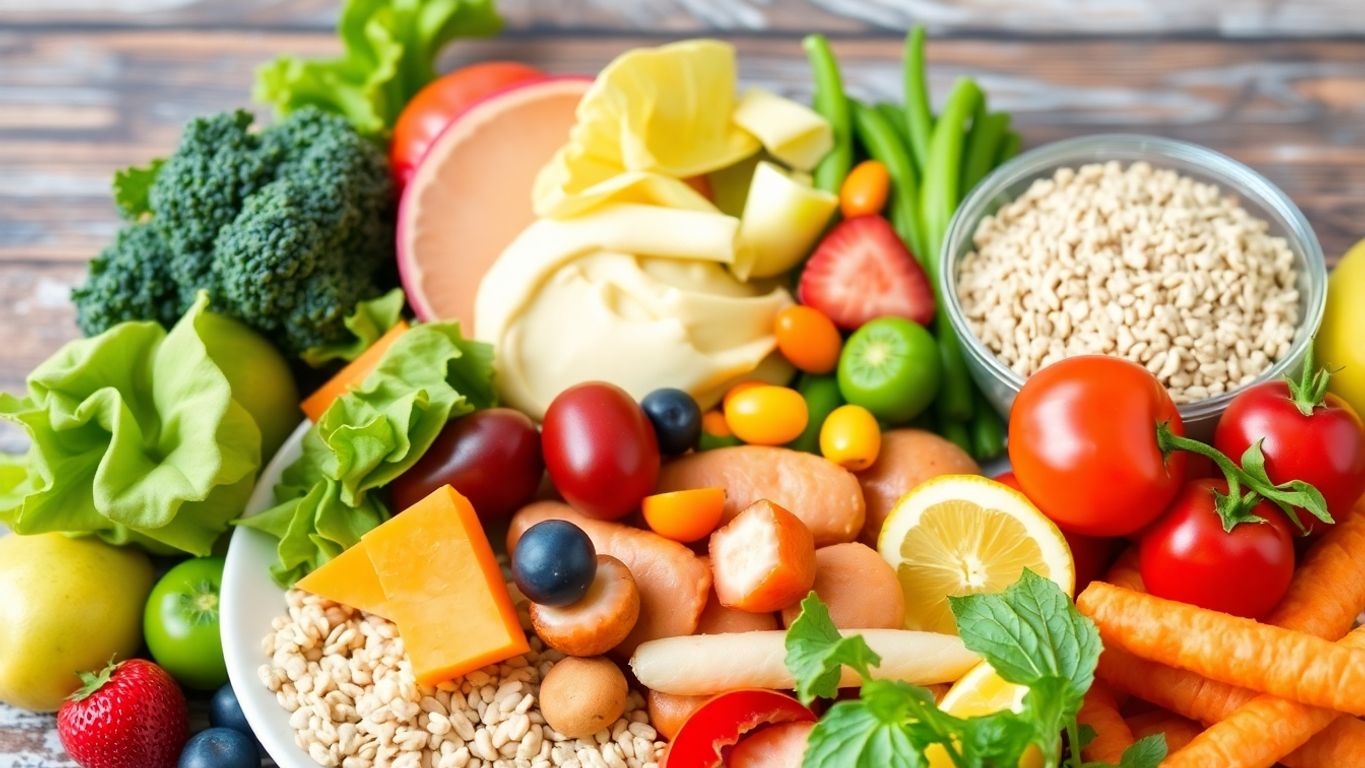
Role of Carbohydrates in POTS
Carbohydrates are an important part of your diet, especially for those with POTS. They provide energy that helps you feel good throughout the day. However, not all carbs are created equal. Choosing the right types of carbohydrates can make a big difference in how you feel.
Choosing Complex Carbs
Instead of simple carbs, which can cause quick spikes in blood sugar, focus on complex carbohydrates. These include:
- Whole grains like brown rice and quinoa
- Vegetables such as sweet potatoes and lentils
- Fruits that are high in fiber
These foods help keep your energy steady and can prevent sudden drops in blood sugar.
Avoiding Sugar Spikes
To manage your energy levels, it’s best to avoid foods that can lead to sugar spikes. Here are some tips:
- Limit sugary snacks and drinks.
- Avoid white bread and pastries.
- Choose snacks that combine protein and fiber, like nuts or yogurt.
Eating the right carbs can help you feel more stable and energized throughout the day.
By balancing your carbohydrate intake, you can support your body better and manage POTS symptoms more effectively. Remember, it’s all about making smart choices!
Protein Power: Building Blocks for Stability
Benefits of Protein in POTS
Protein is important for everyone, but it’s especially vital for those with POTS. It helps maintain muscle mass and supports overall health. Here are some key benefits:
- Helps with energy levels
- Supports muscle repair
- Aids in keeping blood pressure stable
Best Sources of Lean Protein
Choosing the right protein sources can make a big difference. Here are some great options:
- Chicken and turkey: Lean meats that are easy to cook.
- Fish: Especially fatty fish like salmon, which is also high in omega-3s.
- Beans and lentils: Great plant-based options that are also high in fiber.
- Eggs: A versatile and affordable source of protein.
- Cottage cheese: [High in protein and naturally containing sodium], making it a good choice for POTS patients when you sprinkle a little extra salt on top.
Incorporating Protein into Every Meal
Getting enough protein throughout the day is key. Here are some tips to help you:
- Add protein to breakfast, like eggs or Greek yogurt.
- Include a protein source in every lunch and dinner.
- Snack on protein-rich foods, such as nuts or cheese.
Remember, small, frequent meals can help manage symptoms better than large ones. Focus on nutrient-dense foods to keep your energy up and your body strong!
Fats: The Good, The Bad, and The Essential
Understanding Healthy Fats
Fats are an important part of our diet, but not all fats are created equal. Healthy fats can help your body function well, while unhealthy fats can lead to health problems. Here are some types of fats:
- Monounsaturated fats: Found in olive oil, avocados, and nuts.
- Polyunsaturated fats: Found in fish, flaxseeds, and walnuts.
- Saturated fats: Found in fatty meats and full-fat dairy products. It’s best to limit these.
Foods Rich in Omega-3s
Omega-3 fatty acids are a type of healthy fat that can be very beneficial for POTS patients. They help reduce inflammation and support heart health. Here are some great sources:
- Fatty fish like salmon and mackerel
- Chia seeds and flaxseeds
- Walnuts
Limiting Saturated and Trans Fats
It’s important to be careful with certain fats. Saturated and trans fats can raise cholesterol levels and increase the risk of heart disease. Here are some tips to limit them:
- Avoid high-fat meats such as bacon and sausages.
- Choose low-fat dairy options instead of full-fat.
- Read labels to avoid processed foods with trans fats.
Eating the right kinds of fats can help manage POTS symptoms and improve overall health. Focus on whole foods and limit processed options for the best results.
In summary, understanding the different types of fats and making smart choices can greatly benefit your health. Incorporate healthy fats into your meals while avoiding the bad ones for a balanced diet.
Vitamins and Minerals: Supporting Overall Health
Key Vitamins for POTS Patients
Certain vitamins play a crucial role in managing POTS symptoms. Here are some important ones:
- Vitamin D: Supports bone health and immune function.
- Vitamin B12: Helps with energy levels and nerve function.
- Vitamin C: Aids in iron absorption and boosts the immune system.
Minerals That Aid in Symptom Management
Minerals are just as important. They help your body function properly. Here are some key minerals:
- Iron: Essential for blood health and energy.
- Magnesium: Supports muscle and nerve function.
- Sodium: Important for fluid balance, especially for POTS patients.
| Mineral | Benefits |
|---|---|
| Iron | Boosts energy and blood health |
| Magnesium | Helps with muscle function |
| Sodium | Aids in fluid retention |
Supplementation: When and What to Consider
Sometimes, getting enough vitamins and minerals from food can be tough. Here are some tips:
- Talk to your doctor: They can help you decide if you need supplements.
- Choose quality supplements: Look for ones that are easy to absorb.
- Monitor your intake: Keep track of what you eat and take.
Remember, a balanced diet is key. By focusing on nutrient-dense foods, you can support your overall health while managing your POTS symptoms. Vitamins and minerals are essential for feeling your best!
Foods to Avoid for Better Symptom Control
Identifying Common Triggers
When managing POTS, it’s important to know which foods to avoid with POTS. Here are some common triggers:
- Caffeine: This can lead to dehydration and worsen symptoms.
- Alcohol: It may increase symptoms and should be limited.
- High-sugar foods: These can cause energy spikes and crashes.
Limiting Caffeine and Alcohol
Avoiding caffeine and alcohol is crucial for better symptom control. Both can lead to dehydration and make your symptoms worse. Instead, opt for hydrating drinks like water or herbal teas.
Processed Foods and Additives to Watch Out For
Processed foods often contain additives that can trigger symptoms. Here are some to watch out for:
- Preservatives: These can cause reactions in some people.
- Artificial sweeteners: They may upset your stomach.
- High-sodium snacks: While salt is important, too much from processed foods can be harmful.
Remember, managing your diet is a key part of controlling POTS symptoms. Pay attention to how different foods affect you and adjust accordingly.
By avoiding these foods, you can help manage your symptoms better and feel more in control of your health. Stay mindful of your choices and listen to your body!
Meal Planning Tips for POTS Patients
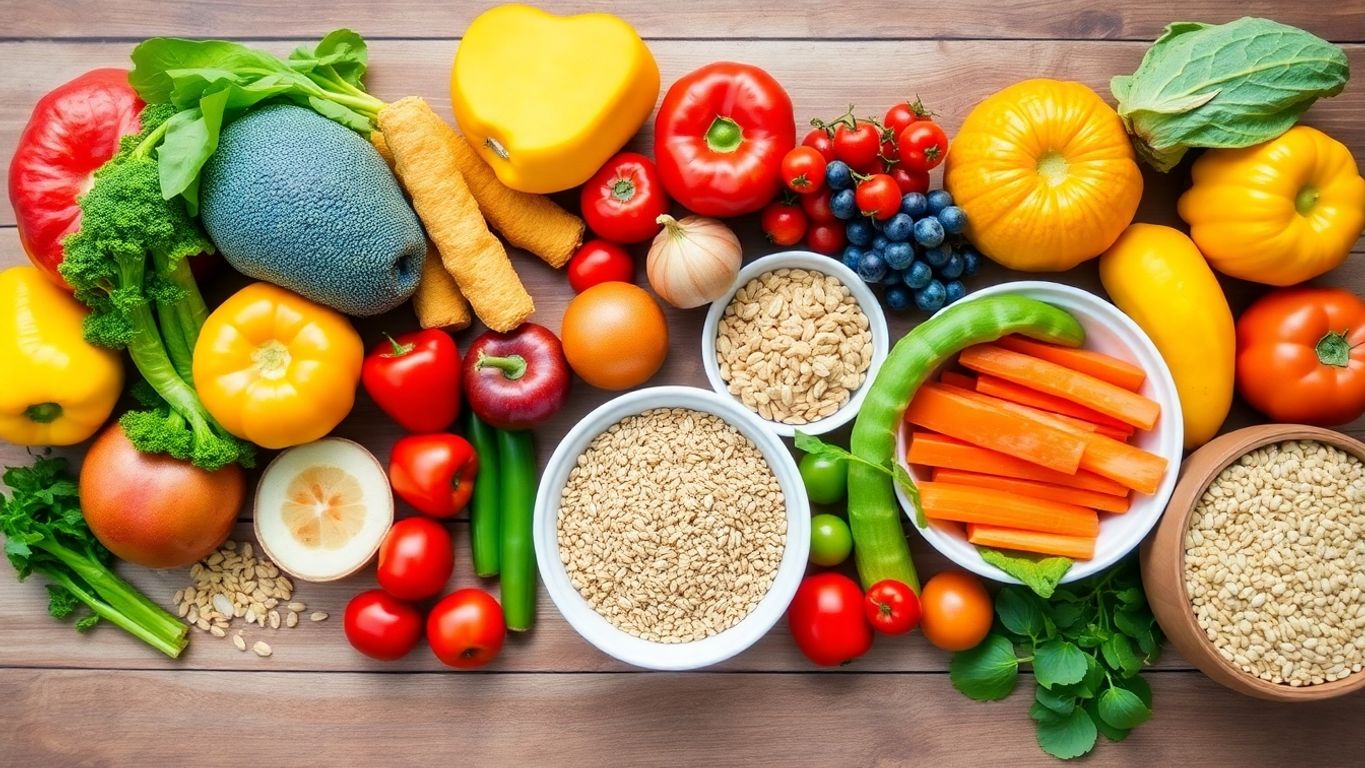
Creating a Balanced Meal Plan
When planning meals, it’s important to focus on balance. A good POTS diet plan includes:
- Lean proteins like chicken, fish, and beans.
- Complex carbohydrates such as whole grains and vegetables.
- Healthy fats from sources like avocados and nuts.
Meal planning made simple can help you stay organized and ensure you get the nutrients you need. Consider using a meal prep service or apps to make this easier.
Snacking Smart Throughout the Day
Snacking can help maintain energy levels. Here are some smart snack ideas:
- Greek yogurt with fruit.
- Hummus with veggies.
- Nuts and seeds.
These snacks can help you avoid big swings in blood sugar, which is crucial for managing POTS symptoms.
Adjusting Meals Based on Symptoms
It’s essential to listen to your body. If certain foods trigger symptoms, try to avoid them. Keeping a food journal can help you track what works and what doesn’t. This practice can:
- Identify common triggers.
- Ensure timely meals.
- Help you adjust your diet as needed.
Remember, eating smaller, more frequent meals can keep your symptoms in check and help you feel better overall.
By following these tips, you can create a meal plan that supports your health and helps manage POTS effectively. Whether you’re newly diagnosed or have been managing this condition for a while, these strategies can make a difference in your daily life.
The Role of Lifestyle in Managing POTS
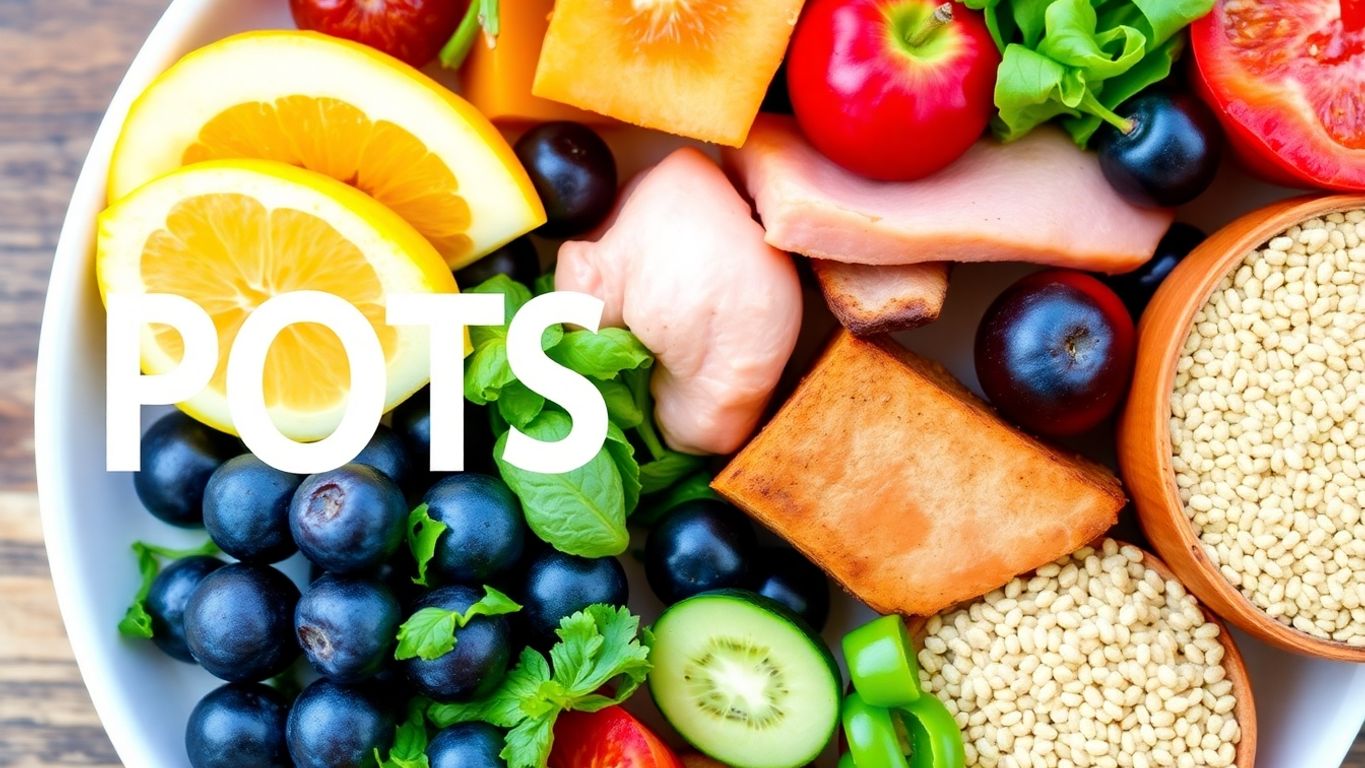
Living with POTS can be challenging, but making some lifestyle changes can help manage symptoms effectively. Combining diet with exercise and other healthy habits is key to feeling better.
Combining Diet with Exercise
Staying active is important for POTS patients. Here are some tips:
- Engage in aerobic exercises like walking, swimming, or biking. These activities can improve your symptoms.
- Start slowly and gradually increase your activity level. This helps your body adjust without overwhelming it.
- Always listen to your body. If you feel tired or dizzy, take a break.
Stress Management Techniques
Managing stress is also crucial. Here are some ways to reduce stress:
- Practice deep breathing exercises.
- Try yoga or meditation to relax your mind.
- Make time for hobbies that you enjoy.
Importance of Regular Medical Check-Ups
Regular check-ups with your doctor can help you stay on track. They can provide guidance on:
- Adjusting your treatment plan as needed.
- Monitoring your symptoms and overall health.
- Discuss any new symptoms or concerns you may have.
Staying as active as possible can help manage POTS symptoms. Patients with severe symptoms might have to limit their lifestyles, but small changes can make a big difference.
In summary, a balanced lifestyle that includes exercise, stress management, and regular medical visits can greatly improve your quality of life with POTS. Remember, every small step counts!
Wrapping It Up: Your POTS Diet Journey
In conclusion, finding the right diet for POTS can help you feel better. By choosing the right foods and avoiding the ones that make you feel worse, you can manage your symptoms more effectively. Remember to include plenty of fruits, vegetables, and whole grains in your meals, while steering clear of processed foods and too much sugar. It’s also important to stay hydrated and consider adding more salt to your diet if your doctor says it’s okay. Everyone’s body is different, so it might take some time to figure out what works best for you. Don’t hesitate to reach out to a nutritionist or a healthcare provider for guidance. With a little patience and the right choices, you can take control of your health and enjoy life more fully.
Frequently Asked Questions
What is POTS and how does it affect me?
POTS stands for Postural Orthostatic Tachycardia Syndrome. It’s a condition that affects how your body controls blood flow and blood pressure, especially when you stand up. This can make you feel dizzy, tired, or even faint.
Why is diet important for people with POTS?
Diet plays a big role in managing POTS symptoms. Certain foods can help improve your energy levels and overall health, while others might make your symptoms worse.
What should I drink to stay hydrated?
It’s important to drink plenty of water. You can also try drinks that have electrolytes, like sports drinks or coconut water, to help keep your body balanced.
How can I add more salt to my diet safely?
Adding salt can help with blood volume and pressure. You can sprinkle a little extra salt on your meals, or eat foods like pickles, olives, or salted nuts.
What types of carbohydrates are best for POTS?
Complex carbohydrates, like whole grains, vegetables, and legumes, are great choices. They provide steady energy without causing blood sugar spikes.
Why is protein important for people with POTS?
Protein helps keep your body strong and can help with energy levels. Good sources of protein include chicken, fish, beans, and nuts.
What fats should I include in my diet?
Healthy fats, like those found in avocados, nuts, and olive oil, are good for you. Try to avoid unhealthy fats, like those in fried foods and snacks.
What foods should I avoid to feel better?
It’s best to stay away from caffeine, alcohol, and processed foods. These can trigger symptoms and make you feel worse.



